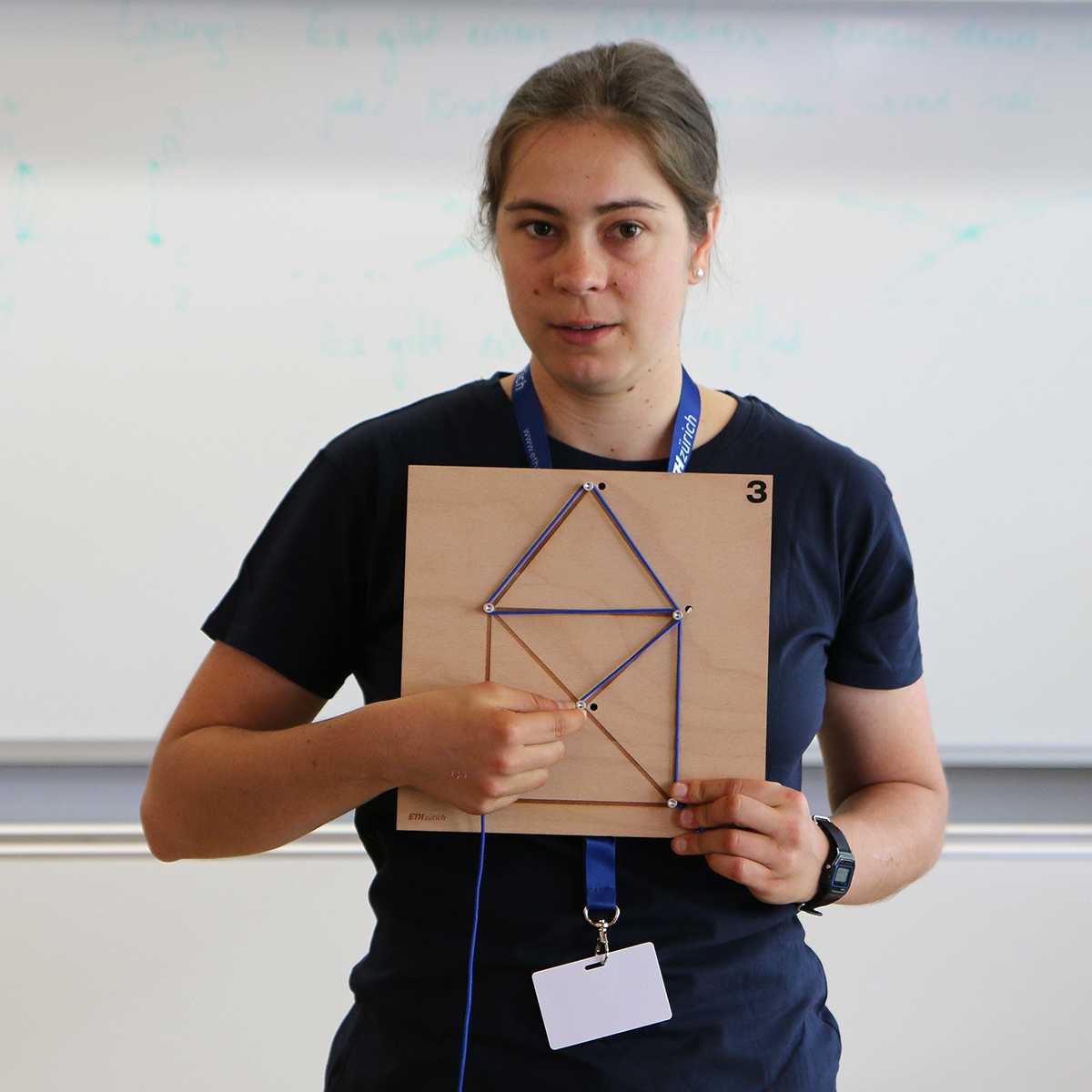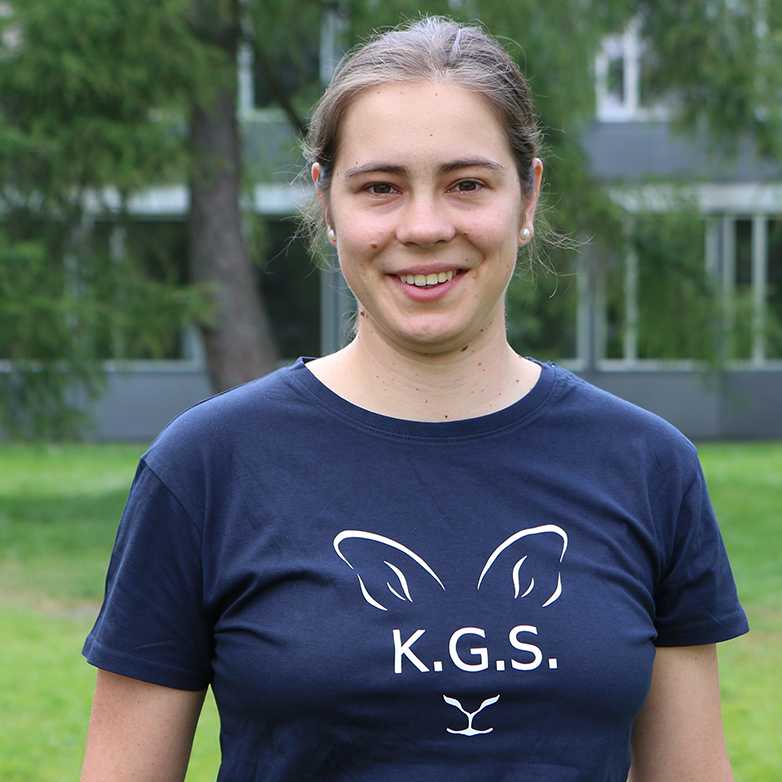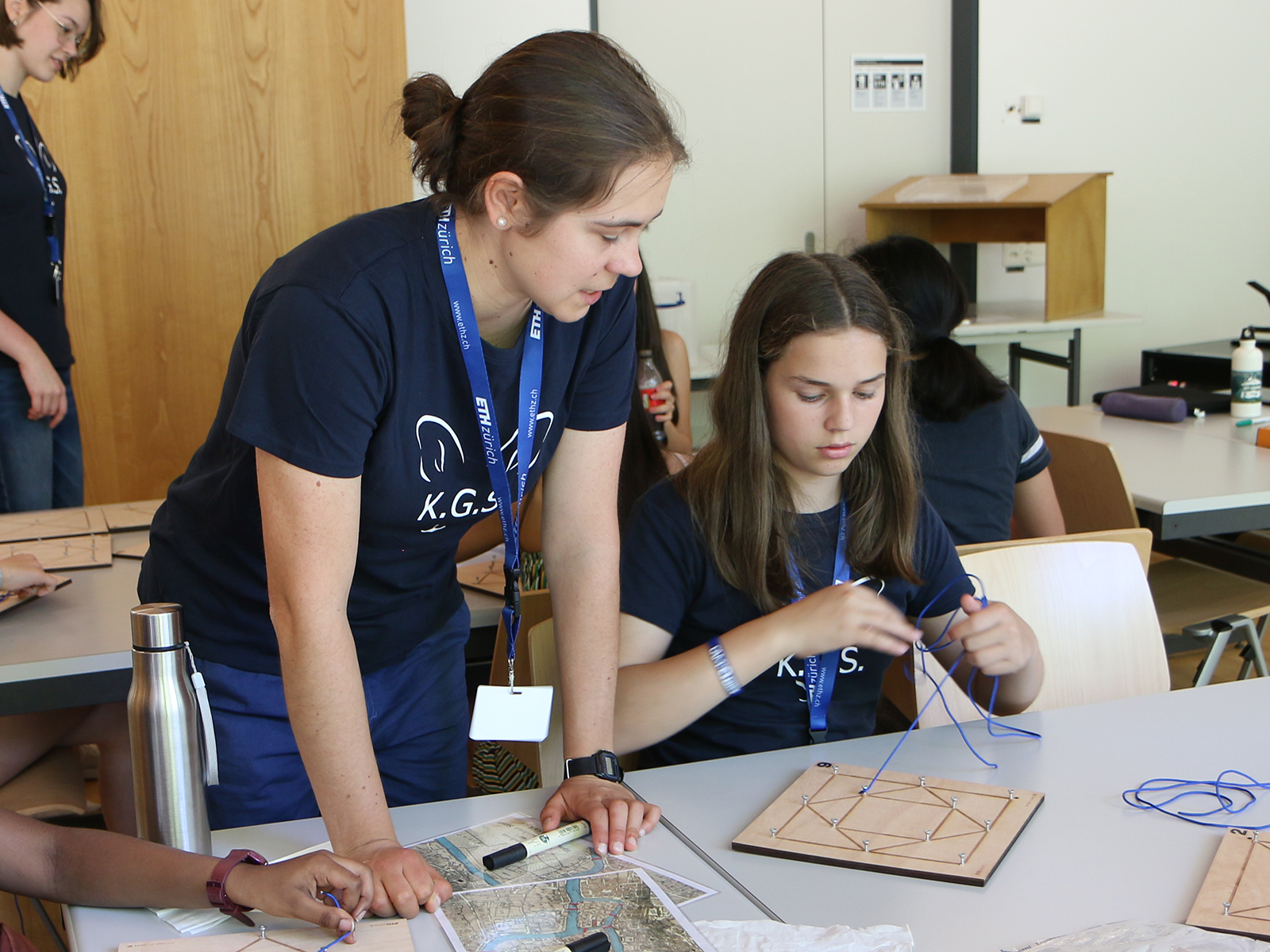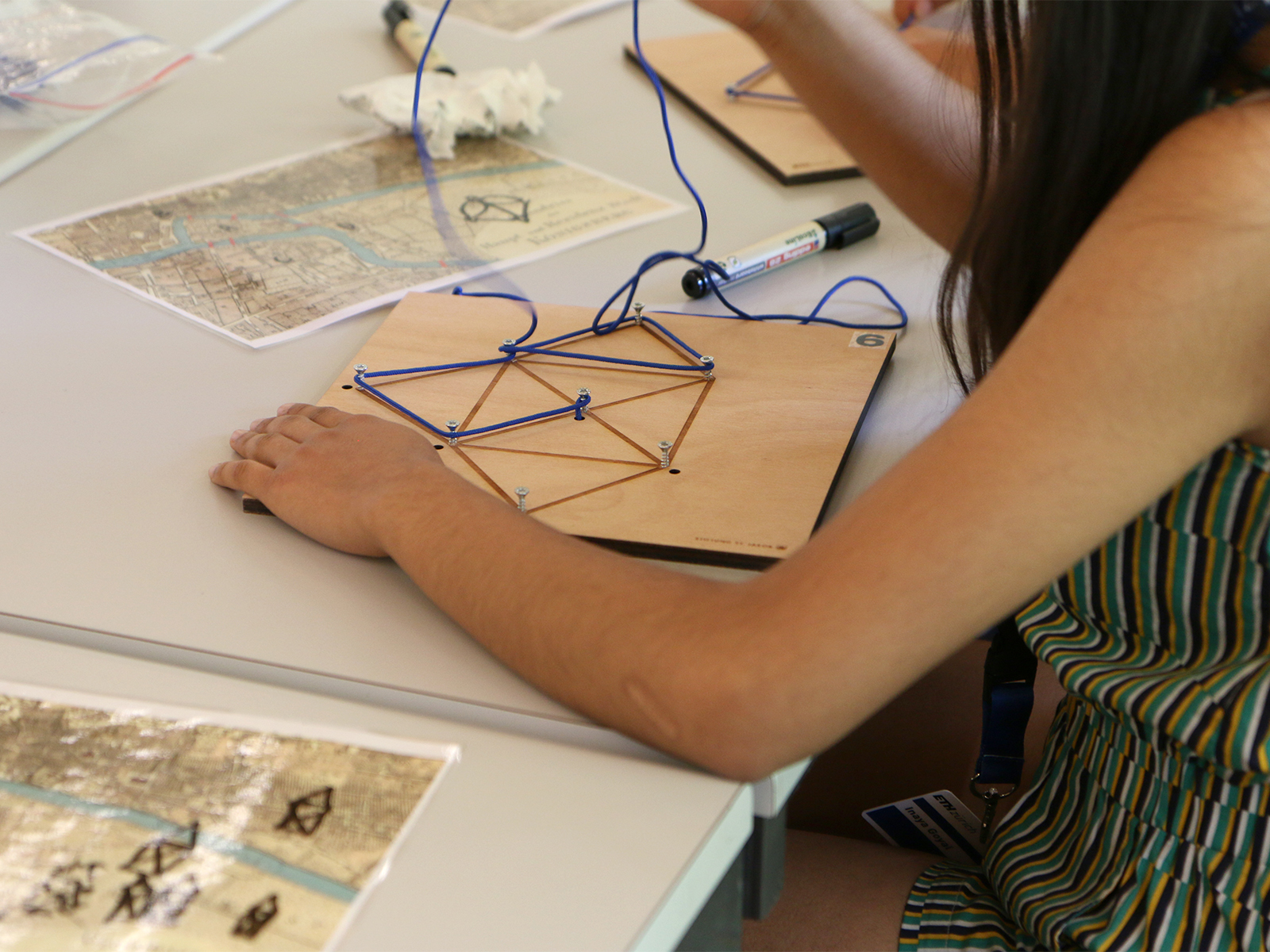Discover, solve puzzles, find role models
ETH invited the 100 best female 7th graders from the Kangaroo mathematics competition to the Hönggerberg campus, providing them with a unique opportunity to meet ETH researchers such as Maybritt Schillinger.
Maybritt Schillinger, doctoral student in the Department of Mathematics, can still clearly remember the Kangaroo mathematics competition that she took part in every year when she was at school. "It was a fixed date in the calendar each year," she recalls with a smile. "I loved the competitive element and the puzzles." She discovered her enthusiasm for the sciences, particularly maths, at an early age and started to attend extracurricular activities such as maths seminars in the sixth grade. "I have lots of good memories of such events," she says. "For one thing, I realised that maths is much more than the recipe-type problem-solving tasks that you get in school and, for another, I made many close friends there."

“For one thing, I realised that maths is much more than the recipe-type problem-solving tasks that you get in school”Maybritt Schillinger
One hundred girls at ETH
Ever since studying mathematics at Heidelberg University, Maybritt has been a dedicated workshop leader and enjoys sparking school pupils’ interest in puzzles and problem-solving. She was delighted to have the opportunity to offer girls a deeper insight into STEM subjects as part of the Kangaroo goes Science event. For the fifth time, the Department of Mathematics, together with the Kangaroo Switzerland Association and the Zurich pod of 500 Women Scientists once again invited the 100 best female 7th graders from the Kangaroo competition to ETH. "This is a valuable acknowledgement of the girls’ achievement and a great opportunity to get to know female role models," says Maybritt of the event.

Campus visit with female ETH students
Schoolgirls from all corners of Switzerland travelled to ETH Hönggerberg last Thursday. Following an introductory event in the morning, which included presentations from three female students about their careers at ETH, the 7th graders split into groups of five to explore the campus alongside a female ETH student. During lunch in their small groups, the girls had time to get to know each other better and ask their mentors anything they liked about science and studying at ETH. "I think it’s natural that girls identify with women more easily – so it's even better that the pupils get to meet other keen female students at Kangaroo goes Science," explains Maybritt.
“I think I’ve got it!”
After lunch, the first two groups of five attended a workshop on graphs led by mathematician Maybritt. She started with a story: the residents of Königsberg want to visit the seven beautiful bridges of their city. So that it doesn't get boring, they only want to cross each bridge once and want to end up back at home. Which route can they take?
The girls eagerly got to work and attempted to find a route on the map. But unfortunately, it's not that easy: there is no solution to the Königsberg bridge problem – as Leonard Euler proved in 1736. Euler translated the city map into a more abstract graph comprising nodes and connections and defined a general rule regarding in which graphs a route with the sought-after properties exists. In doing so, he established the mathematical branch of graph theory.
With a little input and by playing around with different graphs such as the House of Santa Claus, the schoolgirls worked out Euler’s rule themselves. When the promising "Ah, I think I’ve got it!" was heard among the group, Maybritt also beamed: "That is exactly the feeling that makes you love maths!"
Boosting self-confidence
Although she doesn't explicitly feel affected by being in the minority as a woman in maths, Maybritt certainly values events aimed at women and girls. "In mixed groups, young girls in particular are often more reserved and are less inclined to shout up even if they know the answer," she says. "At female-only events, they get more of a chance and can gain a sense of achievement and self-confidence."
Maybritt herself regularly attends events such as the Women in Math Breakfast where women can enjoy discussions in a safe space. "Of course, we also chat about more day-to-day things, not just maths," she explains. "But often, we talk about how to balance a family life and an academic career."

“At female-only events, they get more of a chance and can gain a sense of achievement and self-confidence”Maybritt Schillinger
Mathematics in everyday life
Before the girls headed off to visit the Laboratory of Hydraulics, Hydrology and Glaciology, Maybritt showed them where what they had learnt in the workshop is applied in practice: whether finding the shortest route on Google Maps, identifying a friendship network on Facebook or creating links on the internet – all of these applications are built on graph theory. "I’ve learnt that women are more likely to think about how useful studying maths would be," she says. "So it helps to demonstrate that even abstract theories can ultimately result in useful applications."
Paying forward good memories
In her own research, Maybritt combines mathematics with climate science and, in doing so, hopes to make a contribution to the fight against climate change. She uses statistical methods and machine learning to predict regional climate data such as temperature and rainfall. Compared to conventional climate models, her method has the advantage that it needs less computing power and can calculate climate data locally rather than over a wide area.
Based on her research, Maybritt has developed a workshop on the mathematics of heat records for high school pupils. In August, she will be travelling to a summer school where she will be explaining methods from data analysis and statistics to the children and applying them to data from solar and wind power plants. The dedication of this young mathematician is certainly impressive and is based on her own school experiences: "For me, opportunities like this were extremely important when I was at school," she explains. "By getting involved with events such as Kangaroo goes Science, I want to give something back and get children and young people interested in and inspired by maths."

